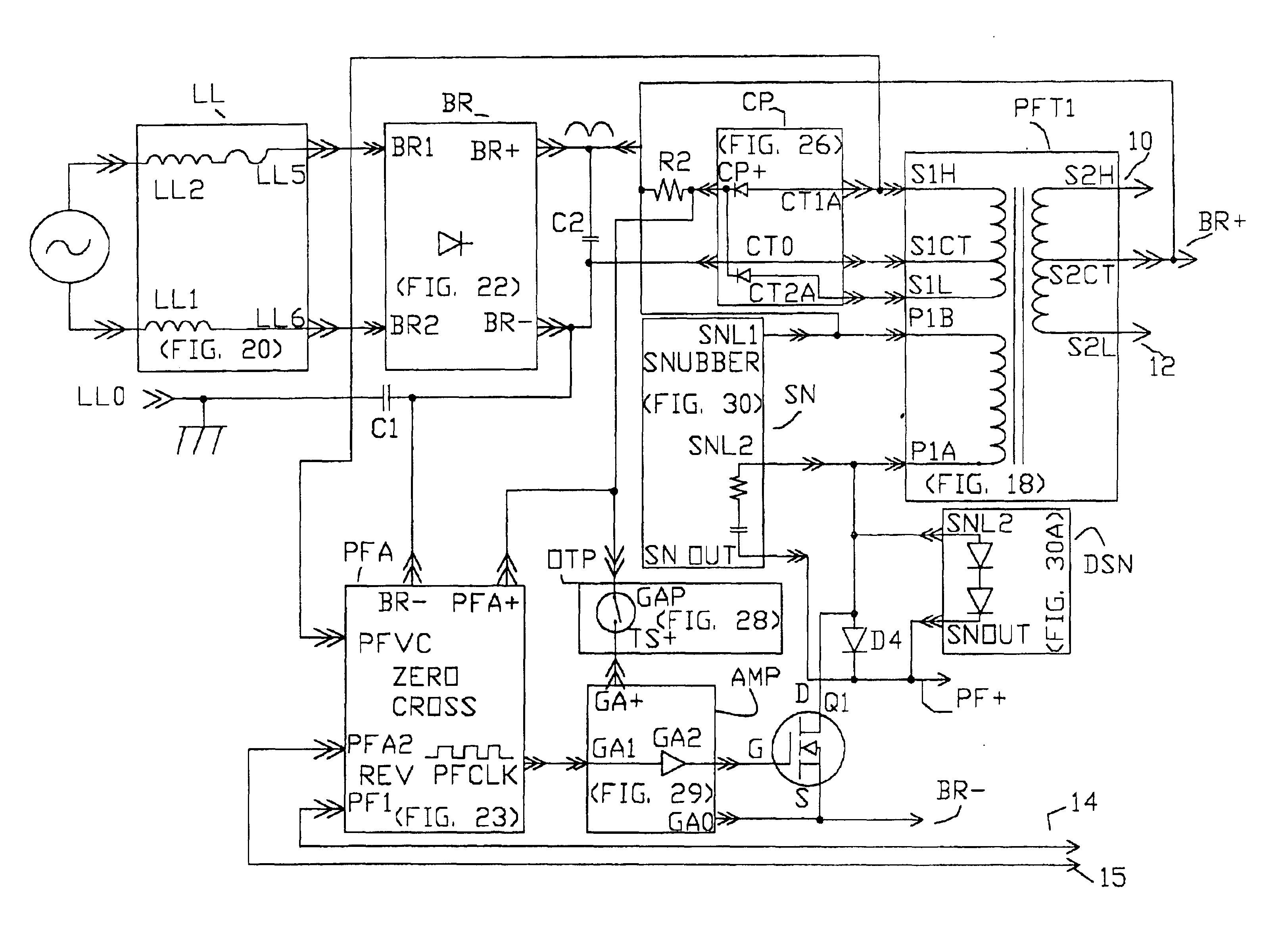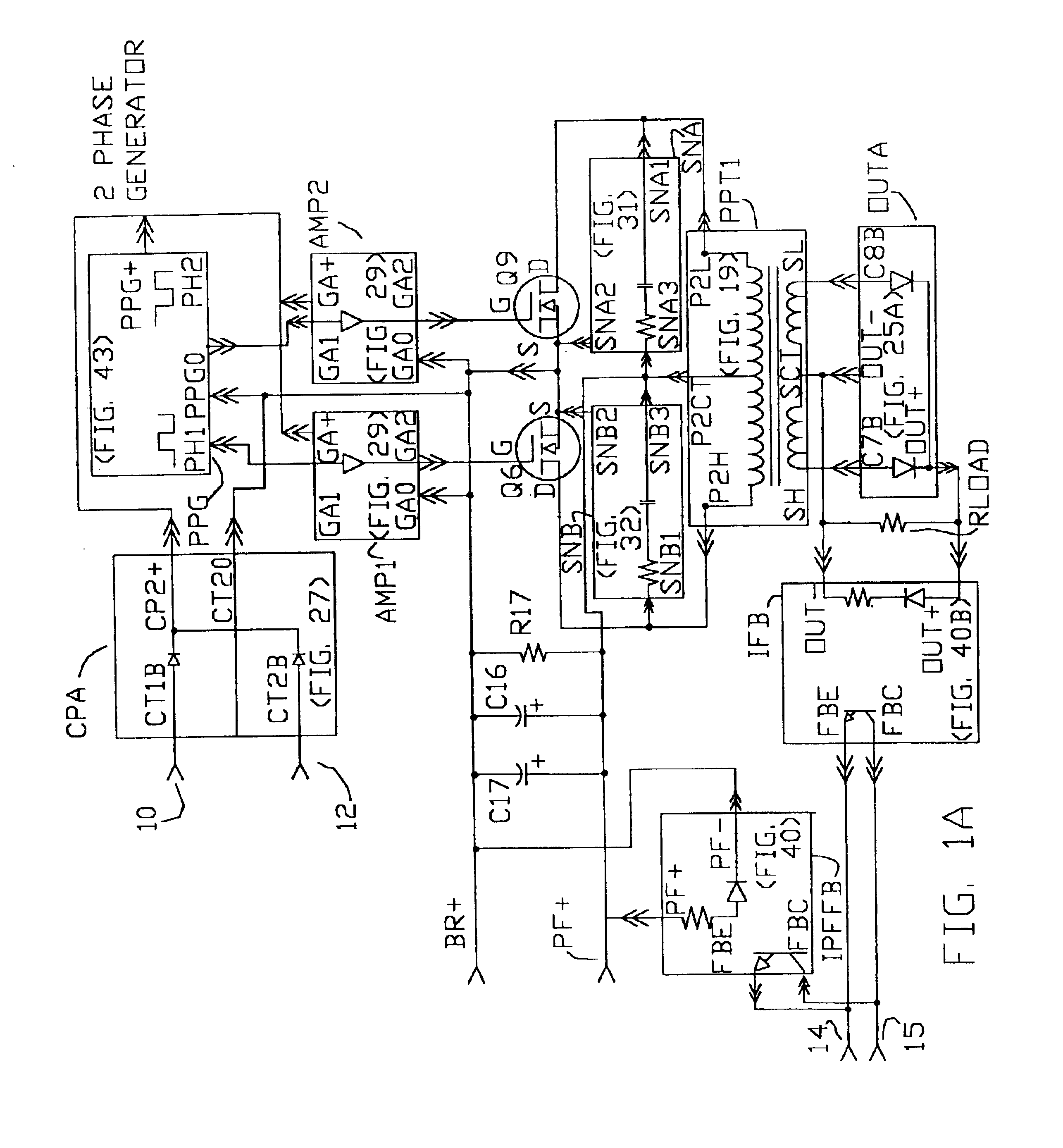Two-stage converter using low permeability magnetics
a magnetic and low-permeability technology, applied in the direction of electric variable regulation, process and machine control, instruments, etc., can solve the problems of high parts count, thermal derating, oversized magnetics, etc., and achieve the effect of high power factor
- Summary
- Abstract
- Description
- Claims
- Application Information
AI Technical Summary
Benefits of technology
Problems solved by technology
Method used
Image
Examples
Embodiment Construction
[0124]In this and other descriptions contained herein, the following symbols shall have the meanings attributed to them: “+” shall indicate a series connection, such as resistor A in series with resistor B shown as “A+B”. “∥” Shall indicate a parallel connection, such as resistor A in parallel with resistor B shown as “A∥B”.
[0125]FIGS. 55 and 55A is a schematic diagram of the preferred two stage power factor corrected AC to DC converter. The invention is comprised of line protection filter sub-circuit LFB (FIG. 62) and ac line monitor sub-circuit ACOKC (FIG. 60). A power factor corrected regulated boost stage with sub-circuits PFC (FIG. 63), snubber sub-circuit SCIN (FIG. 67), snubber sub-circuit SNBB (FIG. 30B), magnetic element sub-circuit PFT2 (FIG. 61), Bias supply sub-circuit CP3 (FIG. 65), buffer sub-circuit AMP (FIG. 29), AC inrush limit sub-circuit ACIR (FIG. 59), voltage feedback sub-circuit VFBI (FIG. 68). Filter capacitor C1, PFC capacitor C2, flyback diode D4, switch tra...
PUM
 Login to View More
Login to View More Abstract
Description
Claims
Application Information
 Login to View More
Login to View More - R&D
- Intellectual Property
- Life Sciences
- Materials
- Tech Scout
- Unparalleled Data Quality
- Higher Quality Content
- 60% Fewer Hallucinations
Browse by: Latest US Patents, China's latest patents, Technical Efficacy Thesaurus, Application Domain, Technology Topic, Popular Technical Reports.
© 2025 PatSnap. All rights reserved.Legal|Privacy policy|Modern Slavery Act Transparency Statement|Sitemap|About US| Contact US: help@patsnap.com



